South Beach Hoosier found these reviews while taking a break from digesting today's first round of the NFL Draft.
Naturally, this film is NOT likely to be playing in South Florida any time soon, despite the fact that the director sold her home in Miami in order to finance it.
I'll have to wait awhile to get my Hoosier fix.
See also: http://www.imdb.com/title/tt0350142/
__________________________________________________________
http://www.washingtonpost.com/wp-dyn/content/article/2007/04/26/AR2007042601570.html?nav=rss_print/style
Washington Post
'Something to Cheer About': A Coach's Net Values
By Stephen Hunter, Washington Post Staff Writer
Friday, April 27, 2007
As nearly everyone who has ever dribbled a basketball knows, the most famous jump shot ever taken left the fingers of a young man on the night of March 20, 1954. The shooter was Bobby Plump, of tiny Milan, Ind. The ball went through the hoop, time ran out, and Milan became one of the smallest schools in Indiana history to win a state championship. Thus are legends born, then filmed, as "Hoosiers" was in 1986, with much fictionalization.
But . . . there's more. There's always more. The "more" kicked in the next year, when a school Milan beat on its way to the championship -- in the quarterfinals, 65-52 -- returned to the Indiana state tournament. That school was Crispus Attucks of Indianapolis. Attucks won the state championship in '55 and '56 (and again in '59), and sophomore guard Oscar Robertson went on to be an all-American at the University of Cincinnati and have a great NBA career. Attucks was the first all-black school -- it was a residue of the segregation then just beginning to loosen its grip on American society -- to win a state championship.
More to the point, as many would argue -- including the makers of the film "Something to Cheer About," an affectionate tribute to the Attucks program under the leadership of visionary coach Ray Crowe -- the success of Attucks changed basketball forever. The wide-open, driving, fast "black game" Crowe emphasized was just beginning to overcome and supplant the set-offense, slow-paced "white game." It signified what would be vouch-safed famously when the University of Texas-El Paso (then Texas Western), with five black starters, beat the University of Kentucky in 1966 for the NCAA championship.
One could even argue that the Milan victory was the high-water mark of white basketball, with its plodding offense, carefully regulated number of passes, and two-handed set shots. In fact, few remember that the game itself -- unless you had a rooting interest -- was rather boring. Milan played a slow-down offense to offset its opponents' power and speed (the opponent was a big-city school, Muncie Central) and Plump dribbled in place at the top of the key in the fourth quarter for four minutes with the score at 30-30, then took a shot -- and missed. Muncie rebounded, drove the court, but failed to score; the ball came back to Plump, who stalled, and then began the drive to the hoop for what would become his famous jumper. But the "Hoosiers" folks left out the 240 seconds of . . . nothingness . . . from the movie.
Whether or not there are such things as white basketball and black basketball, what is before us is a modest documentary, actually made in 2002 but only now gaining national release, which celebrates Attucks and that particular team, but most importantly coach Crowe, by all accounts a remarkable man.
It is said that in those days black teams, when they played white teams, were obligated to be gentlemen first and athletes second, to swallow the one-sided refereeing they were bound to receive, never to shower in the host school's facility and never to seem unsavorily preoccupied with winning.
Crowe changed that. A disciplinarian, he had one advantage in that he'd grown up around whites and didn't feel, as did many in segregated circumstances, uncomfortable in their presence. Liberated, therefore, from the pretense of "gentlemanly" behavior, he encouraged his players to run, shoot, jump and, most of all, win. But he was no run-and-gun guru: He counseled physical conditioning, disciplined offense, teamwork and obedience to his strict rules, which emphasized education as much as sports. And it must be said that he also was the beneficiary of extreme luck, with a roster including not only the one-in-a-million Big O, but also Hallie Bryant and Willie Merriweather, outstanding athletes who went on to college and then semipro and Harlem Globetrotter careers.
The filmmaker is Betsy Blankenbaker; she's not gifted and everything about the film is rudimentary, a mesh of old footage and stills (skillfully done) and talking heads (who do become tiresome). She evidently had access to Robertson for just one afternoon, and we never see him mingle with his former teammates (no reason is given). Instead, we see them, separately, at a celebration of their victory, old, dignified men, proud and strong but restrained. She got to Crowe in the last years of his life (he died in 2003), so that this remarkable man's wisdom, the force of his personality, his commitment to winning the right way or no way, are recorded.
Any hoop-dreamer of any color will enjoy the movie's brief 64 minutes.
Something to Cheer About (64 minutes, at Landmark's E Street Cinema) is not rated.
© 2007 The Washington Post Company
____________________________________________________________
Chicago Sun-Times
Plenty to 'Cheer' in hoops doc
April 27, 2007
BY DAVE HOEKSTRA Staff Reporter
dhoekstra@suntimes.com
There has never been such a grandiose stage for the professional basketball player. During the NBA playoffs you will see a culture of players free-lancing, chest thumping and bringing bling to everything, including a seat at the end of the bench. I miss the congruent poetry of basketball, which is why I took to the loving documentary "Something to Cheer About."
The film's catalyst is Crispus Attucks High School in Indianapolis. In 1955 Attucks won the Indiana state championship, becoming the first all-black school in America to capture a state crown. The Tigers were led by future NBA Hall of Famer Oscar Robertson. A year later, Robertson took Attucks to another state title as it became the first Indiana prep team to complete an undefeated season.
Filmmaker Betsy Blankenbaker's father was a friend of Tigers head coach Ray Crowe (1950-57). She sold her Miami house to fund this 64-minute film, enlisted Robertson and former Tiger Willie Merriweather as co-producers, and embarked on gathering the important oral histories of the surviving players. Blankenbaker began her film in 2000. Four Tigers died during the project. Crowe died in 2003 at age 88, shortly after Blankenbaker finished "Something to Cheer About."
One of Blankenbaker's key acquisitions here is the grainy black and white footage of Crispus Attucks in action during the mid-1950s. It is stunning stuff. Check out the 1955 state championship between Crispus Attucks and Gary Roosevelt and dig the players' Chuck Taylor Hi Tops. Notice the way the team plays for a common goal.
Blankenbaker drives home the point that basketball was a community within a community at Crispus Attucks (the school was named after the African American who had been killed by British troops in the Boston Massacre that preceded the Revolutionary War). Nearly 14,000 fans attended Tigers games, although the team never had a home court. They played at Butler Fieldhouse, Arsenal Technical High School and along the countryside where some farmers had never seen African Americans. The team practiced in a 200-seat gym.
Crispus Attucks opened in 1927 and, according to Indianapolis legend, the Ku Klux Klan had a parade that celebrated the separation of black and white students. In the documentary, cheerleader Maxine Coleman recalled how students were taught to "represent ourselves and our parents wherever we went." Although Blankenbaker uses many present-day interviews, I wanted to learn more about what former players were doing today.
The Tigers had their own tune "The Crazy Song," which fans sang when victory was assured. Written by Attucks teacher Edwina Bell, "The Crazy Song" was not a pep rally song or spirit anthem, it was more of a doo-wop-meets-Cab Calloway number with swaying lyrics like "Hi-de-hi-de, hi-de-ho/That's the skip, bob beat-um/That's the crazy song." The song has a prominent place in "Something To Cheer About."
The dignified tone of the team was set by coach Crowe, a stern father figure. Crowe's players had to be in school in order to obtain playing time on the court. He benched players for what today would be termed as "trash talking." NBA great and Chicago native Isiah Thomas told Blankenbaker that black basketball coaches of this era were some of the "most inventive, free thinking" coaches in the game's history. Crowe deployed a liberating fast-break offense, and he was a pioneer in the democratic triangle offense that Tex Winter and Phil Jackson deployed during the Bulls' 1990s title runs.
Crowe emerges as the hero of "Something To Cheer About," while Robertson is the conscience. Thomas recalled Robertson's influence on his own career, citing Big O's line, "You play as you live."
How much can one coach influence a student?
Robertson earned a business degree at the University of Cincinnati. He was co-captain of the undefeated 1960 U.S. Olympic Team, when United States hoopsters excelled in the international arena. He was president of the NBA Players Association from 1965 until his retirement in 1974. And this season marks the 30th anniversary of the Oscar Robertson Rule, a 1976 class action settlement between the NBA and its players resulting from a lawsuit brought by Robertson six years earlier, which paved the way for free agency and changed the balance of power in pro sports. This legacy would have been unlikely without Crowe's imprint.
Robertson doesn't have as much face time in "Something to Cheer About" as Crowe, but Robertson's memories are stirring, notably when he admits he cannot get over the fact how the Tigers' 1955 and 1956 victory parades were diverted into the black community from the traditional downtown Indianapolis route.
"Something like this can bring a community together," Robertson said in a phone conversation earlier this week. "When we got into the state finals in 1955, cheerleaders from all the other schools came out to cheer for Crispus Attucks. We were known as Indianapolis Attucks and even headlines said the Indianapolis Attucks won the state title." In 2005 Robertson told the Indianapolis Star how the Tigers' success "sped up integration." Their triumphs were reported by the Chicago Defender and Pittsburgh Courier.
The Golden State Warriors are in this year's NBA playoffs. When introduced, former Indiana Pacer Stephen Jackson conducts a fake police frisk with his hands behind his head. He's spoofing his charges of probation violation for discharging a firearm in an Indianapolis strip club parking lot. "Something To Cheer About" is for someone who wants to know about basketball in the compelling shadows before today's game.
These were cheers that changed America.
SOMETHING TO CHEER ABOUT (Not rated)
Critic's rating: Three Stars
Featuring: Oscar Robertson, Ray Crowe and others.
Truly Indie presents a documentary written and directed by Betsy Blankenbaker.
Running time: 64 minutes. No MPAA rating.
Opening today at Landmark Century.
© Copyright 2007 Sun-Times News Group
_____________________________________________________________
http://www.calendarlive.com/movies/reviews/cl-et-something27apr27,0,4281920.story
Los Angeles Times
MOVIE REVIEW 'Something to Cheer About'
A documentary revisits a mid-1950s basketball team.
By Sam Adams
Special to The Times
April 27, 2007
In the documentary "Something to Cheer About," former players at Indianapolis' all-black Crispus Attucks high school recall having to step aside when white folks walked toward them on a busy sidewalk. But on the court, especially under the leadership of coach Ray Crowe, they made room for no one.
In 1955, Attucks became the first all-black team to win a state championship, a feat repeated for the next two years. Indiana Pacer Isaiah Thomas praises the "inventive and free-thinking" coaches of the era, while Sen. Richard Lugar calls Crowe's style, relying on frequent passing and fluid play, "a breakthrough in Indiana basketball."
The former Attucks players who line up for Betsy Blankenbaker's camera have a simpler explanation: Crowe taught them to win. Previous coaches were mainly concerned that the players comported themselves like gentlemen, no mean feat in a segregated era when the team had to travel long distances to find enough schools that would play them to make up a full season.
Crowe, who narrator Willie Merriweather says wanted the game to make the boys rather than the other way around, coached his players in life as well as basketball. Merriweather, later
All-American at Purdue, says he would have dropped out of high school if not for Crowe's paternal influence. But he also expected them to win games, which they did with astonishing and often unbroken regularity.
The most famous Attucks alumnus was Oscar Robertson, who went on to become a 12-time NBA All-Star during seasons with the Cincinnati Royals and Milwaukee Bucks. Thomas calls him "a great thinker of the game," but his fellow players recall him first as a scrawny kid who was allowed to join their pickup games only because he owned his own basketball. Robertson later grew to 6 feet 5, but the nickname "Big O" started out as a joke.
The players' memories amply document the inequities of segregation, recalling a time when they could sell 10,000 tickets to a game at Butler University's field house (having long since outgrown their own facilities) but were still not allowed to eat in the school's cafeteria. Attucks player Bill Hampton describes the prevalence of corrupt officiating, which effectively added the invariably white referees to the other team's roster. "You looked at it like you're playing [against] seven guys, and they're playing [against] five," he says.
But the movie could have had much greater resonance were it not focused so monolithically on basketball. One wonders what life was like at Attucks High, or how the players' success on the court affected their lives off it. Blankenbaker treats her subjects with respect, but always from a distance. The movie never gets under their skin or develops an emotional narrative to go with its historical recitation. It's full of abrupt leaps and blunt conclusions, redundancies and omissions (among them the fact that Attucks, after winning another title in 1959, never returned to the Final Four).
"Something to Cheer About" is the outline of a great story, but it never fills in the gaps.
"Something to Cheer About." MPAA rating: unrated.
Running time: 1 hour, 15 minutes.
Exclusively at Laemmle's Grande, 345 S. Figueroa St., downtown L.A , (213) 617-0268.
Copyright Los Angeles Times
______________________________________________
http://www.villagevoice.com/film/0717,wilonsky,76476,20.html
The Village Voice
Tracking Shots
'Something to Cheer About'
by Robert Wilonsky
April 24th, 2007
Something to Cheer About
Directed by Betsy Blankenbaker
Opens April 27, Quad Cinema
In 1927 Indianapolis, the Ku Klux Klan opened the all-black Crispus Attucks High School with the intention of keeping black children out of allegedly superior white schools. The plan backfired, and Attucks became one of the premier schools in the entire country. By the 1950s, it was also home to one of the greatest basketball teams in the country, led by future immortal Oscar Robertson. Several Attucks Tigers, all spry and thoughtful 50 years on, are on hand here to retrace old footsteps on the hardwood and claim their place in history, but Betsy Blankenbaker's doc doesn't possess the kinetic charge of the tale itself; it's too reliant on talking heads and faded photos. Cheer feels amateurish for a generation raised on sports films.
Shoulda been a slam-dunk too.
________________________________________________
http://movies2.nytimes.com/2007/04/27/movies/27chee.html
New York Times
April 27, 2007
MOVIE REVIEW
'SOMETHING TO CHEER ABOUT'
Victories Beyond the Basketball Court
By JEANNETTE CATSOULIS
Short, sweet and sentimental, "Something to Cheer About" tells the story of Indiana's Crispus Attucks Tigers, who, in 1955, became the first all-black high school basketball team to win a state championship. Like last year's "Glory Road,"
Betsy Blankenbaker's documentary celebrates a victory over much more than just rival teams.Between grainy clips of game film, original team members like the legendary Oscar Robertson, a producer of the film, and the former Harlem Globetrotter Hallie Bryant recall a time when basketball was their release from poverty and segregation.
The team's unusually athletic playing style soon drew crowds of 10,000 and more while confounding its white opponents — who were eager to split the gate but not so eager to socialize afterward.
A trickier problem was the racism of many white officials. "We always believed we could beat any team that we played against," says the former player Stan Patton. "The only two people we had to beat were the referees."
Plodding but heartfelt, "Something to Cheer About" pays tribute to a time when basketball scholarships and professional opportunities were practically unknown.
Back then, a player's only opportunity was to make history.
SOMETHING TO CHEER ABOUT Opens today in New York, Los Angeles, Chicago, Dallas, Detroit, Atlanta, Minneapolis, Indianapolis and Washington.
Written and directed by Betsy Blankenbaker; directors of photography, Robert Shepard and Dustin Teel; edited by Steve Marra; music by Steve Allee; produced by Ms. Blankenbaker, Willie Merriweather and Oscar Robertson; released by Truly Indie.
In Manhattan at the Quad Cinema, 34 West 13th Street, Greenwich Village.
Running time: 64 minutes.
This film is not rated.
Sunday, April 29, 2007
Documentary Film about 1955 Indiana H.S. Champs: Indianapolis Crispus Attucks
Subscribe to:
Post Comments (Atom)
In the Heart of a Great Country, Beats the Soul of Hoosier Nation
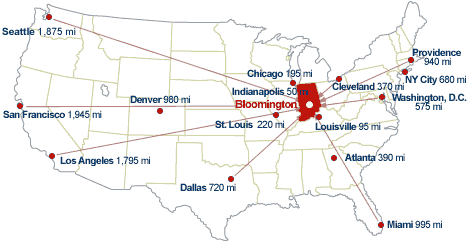
"In the Heart of a Great Country, Beats the Soul of Hoosier Nation." -South Beach Hoosier, 2007
#IUBB, #bannersix
The South Florida I Grew Up In
Excerpts from Joan Didion's Miami, 1987, Simon & Schuster:
In the continuing opera still called, even by Cubans who have now lived the largest part of their lives in this country, el exilo, the exile, meetings at private homes in Miami Beach are seen to have consequences. The actions of individuals are seen to affect events directly. Revolutions and counter-revolutions are framed in the private sector, and the state security apparatus exists exclusively to be enlisted by one or another private player. That this particular political style, indigenous to the Caribbean and to Central America, has now been naturalized in the United States is one reason why, on the flat coastal swamps of South Florida, where the palmettos once blew over the detritus of a dozen failed booms and the hotels were boarded up six months a year, there has evolved since the early New Year's morning in 1959 when Fulgencio Batista flew for the last time out of Havana a settlement of considerable interest, not exactly an American city as American cities have until recently been understood but a tropical capital: long on rumor, short on memory, overbuilt on the chimera of runaway money and referring not to New York or Boston or Los Angeles or Atlanta but to Caracas and Mexico, to Havana and to Bogota and to Paris and Madrid. Of American cities Miami has since 1959 connected only to Washington, which is the peculiarity of both places, and increasingly the warp...
"The general wildness, the eternal labyrinths of waters and marshes, interlocked and apparently neverending; the whole surrounded by interminable swamps... Here I am then in the Floridas, thought I," John James Audobon wrote to the editor of The Monthly American Journal of Geology and Natural Science during the course of an 1831 foray in the territory then still called the Floridas. The place came first, and to touch down there is to begin to understand why at least six administations now have found South Florida so fecund a colony. I never passed through security for a flight to Miami without experiencing a certain weightlessness, the heightened wariness of having left the developed world for a more fluid atmosphere, one in which the native distrust of extreme possibilities that tended to ground the temperate United States in an obeisance to democratic institutions seemed rooted, if at all, only shallowly.
At the gate for such flights the preferred language was already Spanish. Delays were explained by weather in Panama. The very names of the scheduled destinations suggested a world in which many evangelical inclinations had historically been accomodated, many yearnings toward empire indulged...
In this mood Miami seemed not a city at all but a tale, a romance of the tropics, a kind of waking dream in which any possibility could and would be accomodated...
Hallandale Beach Blog
http://www.hallandalebeachblog.blogspot.com/
Hallandale Beach Blog is where I try to inject or otherwise superimpose a degree of accountability, transparency and much-needed insight onto local Broward County government and public policy issues, which I feel is sorely lacking in local media now, despite all the technological advances that have taken place since I grew-up in South Florida in the 1970's. On this blog, I concentrate my energy, enthusiasm, anger, disdain and laser-like attention primarily on the coastal cities of Aventura, Hollywood and Hallandale Beach.
IF you lived in this part of South Florida, you'd ALREADY be in stultifying traffic, be paying higher-than-necessary taxes, and be continually musing about the chronic lack of any real accountability or transparency among not only elected govt. officials, but also of City, County and State employees as well. Collectively, with a few rare exceptions, they couldn't be farther from the sort of strong results-oriented, work-ethic mentality that citizens here deserve and are paying for.
This is particularly true in the town I live in, the City of Hallandale Beach, just north of Aventura and south of Hollywood. There, the Perfect Storm of years of apathy, incompetency and cronyism are all too readily apparent.
It's a city with tremendous potential because of its terrific location and weather, yet its citizens have become numb to its outrages and screw-ups after years of the worst kind of chronic mismanagement and lack of foresight. On a daily basis, they wake up and see the same old problems again that have never being adequately resolved by the city in a logical and responsible fashion. Instead the city government either closes their eyes and hopes you'll forget the problem, or kicks them -once again- further down the road.
I used to ask myself, and not at all rhetorically, "Where are all the enterprising young reporters who want to show through their own hard work and enterprise, what REAL investigative reporting can produce?"
Hearing no response, I decided to start a blog that could do some of these things, taking the p.o.v. of a reasonable-but-skeptical person seeing the situation for the first time.
Someone who wanted questions answered in a honest and forthright fashion that citizens have the right to expect.
Hallandale Beach Blog intends to be a catalyst for positive change. http://www.hallandalebeachblog.blogspot.com/
http://www.hallandalebeachblog.blogspot.com/
Hallandale Beach Blog is where I try to inject or otherwise superimpose a degree of accountability, transparency and much-needed insight onto local Broward County government and public policy issues, which I feel is sorely lacking in local media now, despite all the technological advances that have taken place since I grew-up in South Florida in the 1970's. On this blog, I concentrate my energy, enthusiasm, anger, disdain and laser-like attention primarily on the coastal cities of Aventura, Hollywood and Hallandale Beach.
IF you lived in this part of South Florida, you'd ALREADY be in stultifying traffic, be paying higher-than-necessary taxes, and be continually musing about the chronic lack of any real accountability or transparency among not only elected govt. officials, but also of City, County and State employees as well. Collectively, with a few rare exceptions, they couldn't be farther from the sort of strong results-oriented, work-ethic mentality that citizens here deserve and are paying for.
This is particularly true in the town I live in, the City of Hallandale Beach, just north of Aventura and south of Hollywood. There, the Perfect Storm of years of apathy, incompetency and cronyism are all too readily apparent.
Sadly for its residents, Hallandale Beach is where even the easily-solved or entirely predictable quality-of-life problems are left to fester for YEARS on end, because of myopia, lack of common sense and the unsatisfactory management and coordination of resources and personnel.
It's a city with tremendous potential because of its terrific location and weather, yet its citizens have become numb to its outrages and screw-ups after years of the worst kind of chronic mismanagement and lack of foresight. On a daily basis, they wake up and see the same old problems again that have never being adequately resolved by the city in a logical and responsible fashion. Instead the city government either closes their eyes and hopes you'll forget the problem, or kicks them -once again- further down the road.
I used to ask myself, and not at all rhetorically, "Where are all the enterprising young reporters who want to show through their own hard work and enterprise, what REAL investigative reporting can produce?"
Hearing no response, I decided to start a blog that could do some of these things, taking the p.o.v. of a reasonable-but-skeptical person seeing the situation for the first time.
Someone who wanted questions answered in a honest and forthright fashion that citizens have the right to expect.
Hallandale Beach Blog intends to be a catalyst for positive change. http://www.hallandalebeachblog.blogspot.com/
Hallandale Beach's iconic beachball-colored Water Tower, between beach and A1A/South Ocean Drive
Hollywood in Cartoons, The New Yorker

"Gentlemen, I am happy to announce that as of today we are closing down our Washington news bureau and moving the entire operation to L.A."
Hollywood in Cartoons, The New Yorker
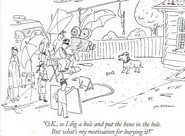
"O.K., so I dig a hole and put the bone in the hole. But what's my motivation for burying it?"
Hollywood in cartoons, 10-21-06 Non-Sequitur by Wiley, www-NON-SEQUITUR.COM

The Magic of Hollywood: A motion has been put forth that we should seek to create rather than imitate. All in favor of killing this silly notion, nod in mindless agreement...
Miami Dolphins
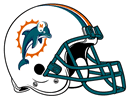
South Beach Hoosier's first Dolphin game at the Orange Bowl came in Dec. 1970, aged 9, a 45-3 win over Buffalo that propelled them into their first ever playoff appearance.
Sebastian the Ibis, the Spirited Mascot of the University of Miami Hurricanes

Before going to my first U-M game at the Orange Bowl in 1972, a friend's father often would bring me home an extra 'Canes game program. That's how I came to have the Alabama at U-M game program from Nov. 16, 1968, which was the first nationally-televised college football night game in color. (A 14-6 loss to the Crimson Tide.) After that first ballgame against Tulane, as l often did for Dolphin games if my father wasn't going, I'd get dropped off at the Levitz parking lot near the 836 & I-95 Cloverleaf in NMB, and catch a Dade County Park & Ride bus, going straight to the Orange Bowl. Onboard, I'd get next to the window and listen to WIOD's pre-game show on my Radio Shack transistor radio. A few times, I was just about the only person onboard besides the bus driver, which was alright by me. Once at the Orange Bowl, if I didn't already have a ticket, I'd buy a game program for myself and one or two for friends or teachers before heading to the ticket window, since you usually couldn't find a program vendor once inside. I probaly had a friend or my father with me for just under 40% of the U-M games I ever went to, but you have to remember that the team, though blessed with several talented players, like Chuck Foreman and Burgess Owens, was just so-so to average at best, and the games were usually played on Friday nights, so it wasn't exactly high on everyone's list of things to do. Depending upon the opponent, if I was alone, I'd often have entire areas of the Orange Bowl to myself. (Wish I had photos of that now!) For instance, I had a good portion of the East (open) End Zone to myself against Oklahoma in the mid-70's, when the Boomer Schooner and the Schooner Crew went out on the field after an Oklahoma TD, and the Schooner received an unsportsmanlike conduct penalty from the refs, as would happen years later in an Orangle Bowl Classic game. (Against FSU?) I was there for the wins and losses under Pete Elliott, Carl Selmer & Lou Saban, and the huge on-field fight in '73 when under eventual national champion Notre Dame (under Ara Parseghian), they called a time-out with less than a minute to go, and already up 37-0. Their rationale? To score another TD and impress the AP football writers; final score 44-0. Well, they got their wish and beat Alabama 24-23 for the title at the Sugar Bowl. A year later, thanks to my Mom's boss, she and I saw Ara's last game as head coach of the Irish in the Orange Bowl Game from the East End Zone -in front of the Alabama cheerleaders!!!- in an exciting 13-11 Notre Dame win over Alabama and Bear Bryant, a rematch of the '73 national title game. I was also present for the U-M's huge 20-15 win under Pete Elliott against Darrel Royal's Texas Longhorns, the week Sports Illustrated's College Football preview issue came out with Texas on the cover, below. I was also present for lots of wins against schools called College of the Pacific, UNLV and Cal-Poly San Luis Obsispo, which I'd then never heard of before.
Miami Dolphins Cheerleaders, April 28, 2007

Photo by Mario J. Bermudez. April 28, 2007 at Dolphins NFL Draft Party at Dolphin HQ, Davie, FL
Of cheerleaders past and present
Given South Florida's unique version of the melting pot -con salsa- demographics and mindset, these women in the photo above are surely what most South Floridians would consider attractive women. But for this observer, who's spent hours & hours at IU cheerleader tryouts and who has known dozens of cheerleaders -and wannabes- in North Miami Beach, Bloomington, Evanston and Washington, D.C., the whole time I was watching these members of the Dolphins' squad perform, I couldn't help but compare them and their routines to those of some IU friends of mine who ALWAYS showed true Hoosier spirit & enthusiasm.
Sitting at my table right near the stage and still later, while watching the long lines of Dolphin fans of all ages waiting to snap photos of themselves with the cheerleaders, I couldn't help but think about those friends who always left me and other Hoosier fans feeling positive & optimistic.
Was there anyone I saw in Davie who possessed these valuable intangibles: the dancing precision of IU Red Stepper -and Captain- Gail Amster, my talented and spirited Phi Beta Kappa pal from Deerfield (IL), who always sat next to me in our Telecom. classes as we took turns entertaining the other; the ebullient spirit & energy of two Hoosier cheerleaders -and captains- from Bloomington, Wendy (Mulholland) Moyle & Sara Cox; the hypnotic, Midwestern, girl-next-door sexiness of Hoosier cheerleader Julie Bymaster, from Brownsburg; or, the adorable Southern girl-next-door appeal of former Hoosier Pom squader Jennifer Grimes, of Louisville, always such a clear distraction while sitting underneath the basket?
Nope, not that I could see. But then they were VERY tough acts to follow!!!
And that's not to mention my talented & spirited friends like Denise Andrews of Portage, Jody Kosanovich of Hammond & Linda Ahlbrand of Chesterton, all of whom were dynamic cheerleaders -and captains- at very large Hoosier high schools that were always in the championship mix, with Denise's team winning the Ind. football championship her senior year when she was captain -just like in a movie. That Denise, Jody & Linda all lived on the same dorm floor, just three stories above me at Briscoe Quad our freshman year, was one of the greatest coincidences -and strokes of luck for me!- that I could've ever hoped for.
You could hardly ask for better ambassadors of IU than THESE very smart, sweet and talented women. In a future SBH post, I'll tell the story of one of the greatest Hoosiers I ever met, the aforementioned Wendy Mulholland, the Bloomington-born captain and emotional heart of the great early '80's IU cheerleading squads, and the daughter of Jack Mulholland, IU's former longtime Treasurer. The acorn doesn't fall far from a tree built on a foundation of integrity & community service!
(After he retired, Mr. Mulholland was the first executive director of the Community Foundation of Bloomington and Monroe County. I used to joke with Wendy that her dad's name was the one that was permanently affixed to the bottom of my work-study checks for years, while I worked at the Dept. of Political Science's Library, first, at the Student Building in the old part of campus, and then later, after it was refurbished, in magnificent Woodburn Hall, my favorite building on campus.)
In that future post, I'll share some reflections on Wendy's great strength of character and personality; my intentions of returning to Bloomington a few weeks before Fall '82 classes started, so I could help Wendy train and work-out to rehab her knee, so she'd feel confident in trying-out for the squad again, following a bad knee injury that'd left her physically-unable to try-out for the squad the previous spring, a big disappointment to those of us who cared about both Wendy and the team; my incredulity at, quite literally, running into Wendy while walking down a sidewalk one afternoon a few years later in Evanston, IL, when we were astonished to discover we were both living there, with me trying to hook on with a Windy City advertising agency, and Wendy then-attending Kellogg (KGSM) at Northwestern, right when the WSJ had named Kellogg the #1 Business School in the country.
I'll also share a story about Wendy performing a true act of kindness towards me in 1982, when I was having a real emergency, and she went above-and-beyond what I had any logical reason to expect. Yet, Wendy, along with her very helpful dad, Jack, came through for me when I was in a very bad time crunch. I've never forgotten Wendy's kindness towards me, and her true Hoosier spirit.
There's NOTHING I wouldn't do for Wendy Mulholland.
It's All About "The U"

South Beach Hoosier's first U-M football game at the Orange Bowl was in 1972, age 11, against Tulane in the infamous "Fifth Down" game. In order to drum up support and attendance for the U-M at the Orange Bowl, that game had a promotion whereby South Florida kids who were school safety patrols could get in for free IF they wore their sash. I did. Clearly they knew that it was better to let kids in for free, knowing their parents would give them money to buy food and souvenirs, perhaps become a fan and want to return for future games. The ballgame made an interesting impression on The New York Times, resulting in this gem from the "View of Sport" column of Oct, 14, 1990, labeled 'Fifth Down or Not, It's Over When It's Over.' -"In 1972, aided by a fifth-down officiating gift in the last moments of the game, Miami of Florida defeated Tulane, 24-21. The country and the world was a much different place that fall because The New York Times took time and space to editorialize on the subject. ''Is it right for sportsmen, particularly young athletes, to be penalized or deprived of the goals for which they earnestly competed because responsible officials make mistakes? The ideal of true sportsmanship would be better served if Miami forfeited last week's game.' South Beach Hoosier hardly needs to tell you that this was YET another New York Times editoral that was completely ignored!
The issue I took with me the night of U-M's 20-15 upset of #1 Texas at the Orange Bowl
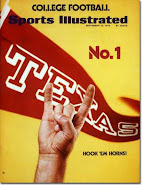
College Football, Texas No. 1, Hook 'em Horns, Sept. 10, 1973. Living in North Miami Beach in the '70's, my Sports Illustrated usually showed up in my mailbox on the Thursday or Friday before the Monday cover date. And was read cover-to-cover by Sunday morning.
The Perfect Storm
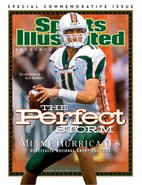
U-M QB Ken Dorsey, Miami Hurricanes Undefeated National Champions 2001, Jan. 2002
Miami's Romp in the Rose
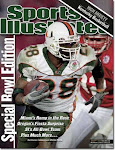
Miami running back Clinton Portis, Jan. 7, 2002
Why the University of Miami should drop football
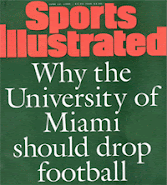
June 12, 1995
REVENGE!
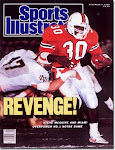
Steve McGuire and Miami Overpower No.1 Notre Dame, Dec. 4, 1989
How Sweet It Is!
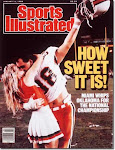
Miami Whips Oklahoma For The National Championship, Pictured: Dennis Kelleher, Jan. 11, 1988
My, Oh My, Miami!
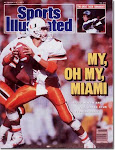
Steve Walsh and the Canes Stun FSU, Oct. 12, 1987
Why Is Miami No. 1?

QB Vinny Testaverde, Nov. 24, 1986
Miracle In Miami
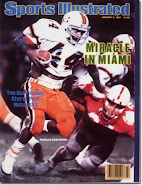
The Hurricanes Storm Past Nebraska, Halfback Keith Griffin, Jan. 9, 1984
Special Issue: College Football
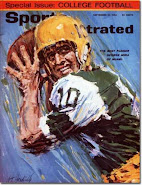
The Best Passer, George Mira of Miami, Sept. 23, 1963
1984 College & Pro Spectatcular
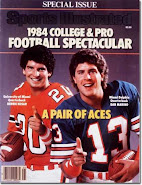
A Pair Of Aces: U-M QB Bernie Kosar & Miami Dolphin QB Dan Marino, Sept. 5, 1984
Pro Football Hall of Fame Special Issue

Dan Marino, Class of 2005, Aug. 2005
FACES OF THE NFL
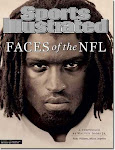
A Portfolio by Walter Iooss Jr., Ricky Williams, Miami Dolphins, Dec. 9, 2002
Coming Back
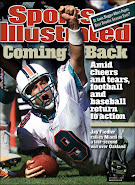
Jay Fiedler rallies Miami to a last-second win over Oakland, Oct. 1, 2001
Dan's Last Stand
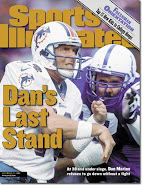
At 38 and under siege, Dan Marino refuses to go down without a fight, Dec. 13, 1999
The War Zone
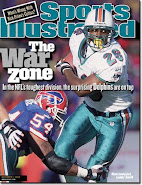
In the NFL's toughest division, the surprising Dolphins are on top, Lamar Smith, Dec. 11, 2000
Down and Dirty
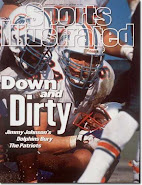
Jimmy Johnson's Dolphins Bury The Patriots, Steve Emtman, Sept. 9, 1996
The Sunshine Boys

Now Playing in Miami: The Dan Marino and Jimmy Johnson Show, May 11, 1996
HOT & NOT
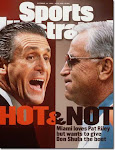
Miami loves Pat Riley but wants to give Don Shula the boot, Dec. 11, 1995
NFL PREVIEW 1995
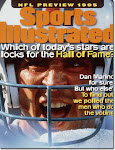
Which of today's stars are locks for the Hall of Fame? Dan Marino for sure. But who else? To find out, we polled the men who do the voting. Sept. 14, 1995
Sportsman Of The Year
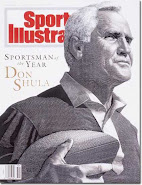
Don Shula, Dec. 20, 1993
Dan The Man
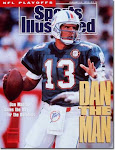
Dan Marino Saves The Day For The Dolphins, Jan. 14, 1991
Dangerous Dan
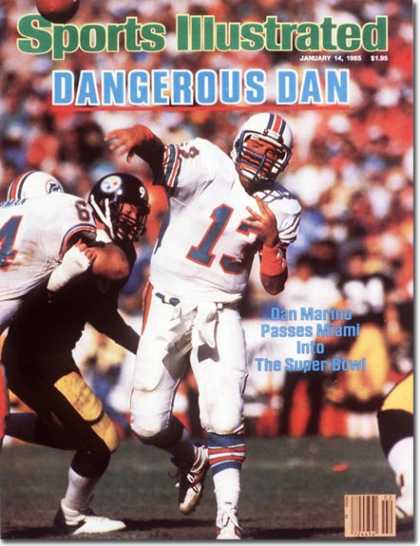
Dan Marino Passes Miami Into The Super Bowl, Jan. 14, 1985
Super Duper!

Wide Receiver Mark Duper Of The Undefeated Dolphins, Nov. 19, 1984
Air Raid! Miami Bombs Washington
+Sep+10,+1984.jpg)
Mark Clayton (burning Darryl Green) Sept. 10, 1984
Rookies On The Rise
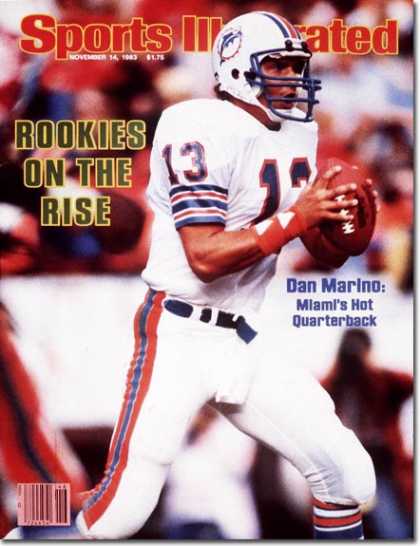
Dan Marino: Miami's Hot Quarterback, Nov. 14, 1983
New Life In The WFL
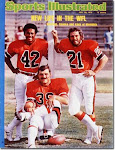
Warfield, Csonka and Kiick of Memphis, July 28, 1975
Zonk! Miami Massacres Minnesota
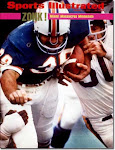
Larry Csonka, Jan. 21, 1974
Pro Football, Miami Is Rough And Ready

Larry Csonka & Bob Griese, Sept. 17, 1973
Miami All The Way
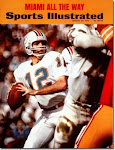
Bob Griese, Jan. 22, 1973
It's Miami and Washington
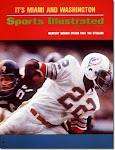
Mercury Morris Speeds Past The Steelers, Jan. 8, 1973
Kiick and Csonka, Miami's Dynamic Duo

Larry Csonka & Jim Kiick, Aug. 7, 1972
Sudden Death at Kansas City
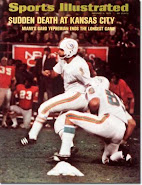
Miami's Garo Yepremian Ends the Longest Game; (kneeling) placekick holder Karl Noonan, Jan. 3, 1972
New Pro in a New Town

Miami's Frank Emanuel, Aug. 8, 1966
Old-style "Obie" the Orange Bowl Committee mascot

The iconic image I grew-up with in Miami, before FedEx got into the picture

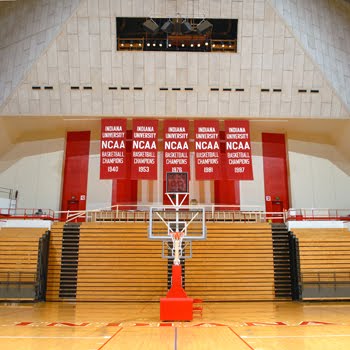

No comments:
Post a Comment